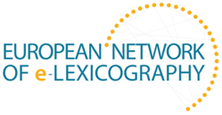Through the Internet scholarly dictionaries can potentially reach a very large audience. However, at present scholarly dictionaries providing reliable information are often not easy to find and hard to decode for a non-academic audience; ‘traditional’ dictionary users tend to use easily accessible non-academic, user-generated dictionaries. In order to let a larger audience benefit from high quality dictionary content, we should bridge the gap between the general public and scholarly dictionaries by improving acces to these dictionaries and making them more widely known.
Most scholarly dictionary projects make their products available on the Internet or are planning to go online. All of them find themselves confronted with similar problems relating to technologies for producing lexicographical content, presentation of content, interaction with dictionary users, etc. Most dictionaries take different approaches to and find different solutions for these problems. So far European cooperation in these fields has been restricted to bilateral collaborations. There is a clear need for a broader and more systematic exchange of expertise and for the establishment of common standards and solutions.
In the past few years, innovative electronic dictionaries have been created that no longer resemble traditional paper dictionaries but try to fully exploit the new possibilities of the digital medium. Though serious attempts have already been made at embedding electronic lexicography into a theoretical framework, a new research paradigm and common standards for electronic lexicography are still lacking. And so are common standards and cooperation for the interlinking of content of digitized dictionaries and innovative e-dictionaries.
The digital medium has the potential for a new type of lexicography that no longer views languages as isolated entities. Language migration has always been part of language history, yet this is often not properly reflected in dictionaries. Many dictionaries have their origins in the 19th century, where a national perspective on language prevailed. Consequently, the information in the dictionaries is mostly presented from the point of view of a single language, not sufficiently taking into account similar or related developments in other European languages. This view of languages often also dominates modern dictionaries. There is a clear need for a common approach to e-lexicography that forms the basis for a new type of lexicography that fully embraces the pan-European nature of much of the vocabularies of languages spoken in Europe.
